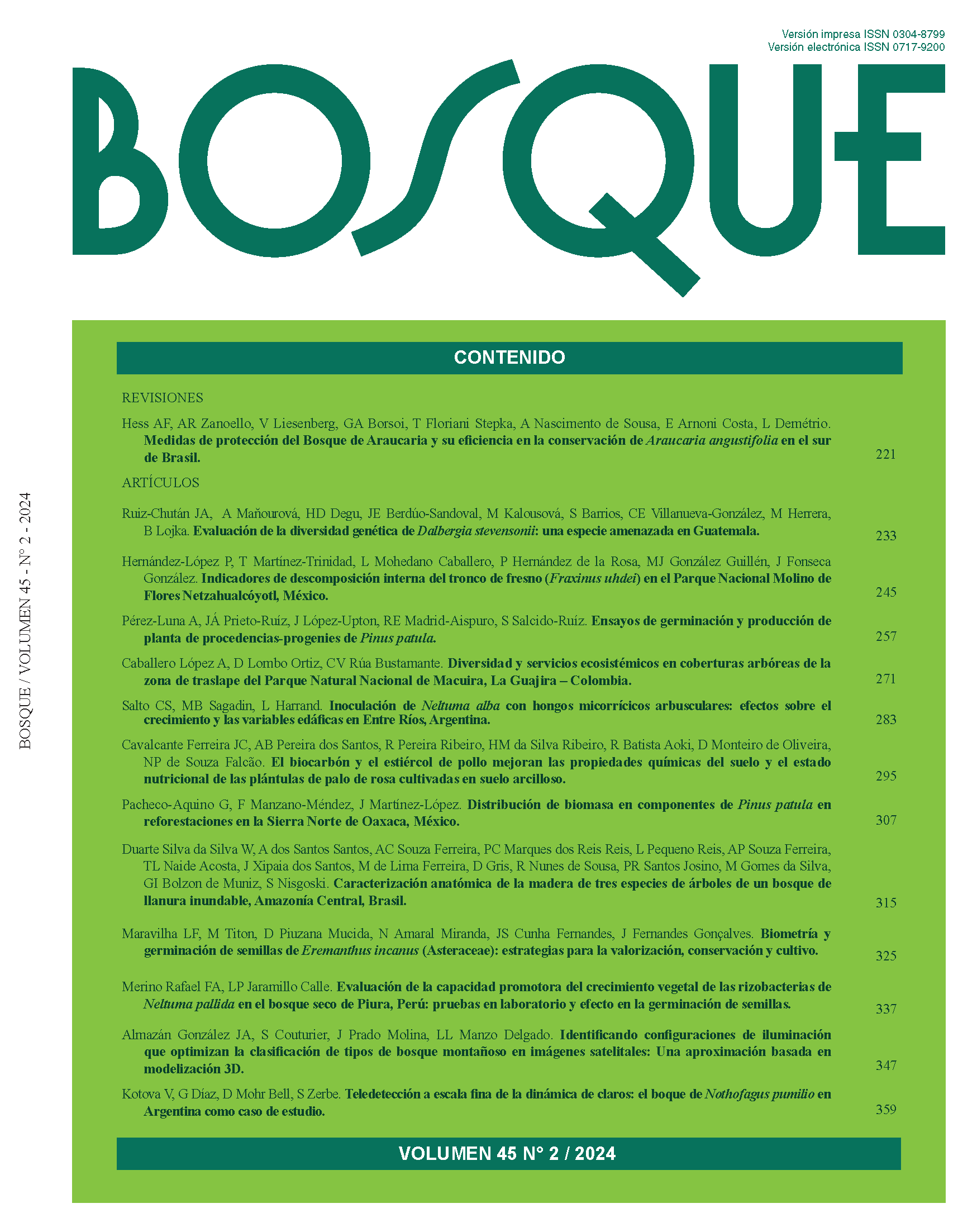Remote sensing of forest fine-scale gap dynamics: A case study on lenga beech forests in Argentina
Conteúdo do artigo principal
Resumo
The Andean Patagonian forests are characterized, on the one hand, by a high degree of naturalness and, on the other hand, by signs of degradation by grazing, unsustainable timber use, the invasion of non-native tree species and anthropogenic fire. Considering the large extent of these forests and the variety of uses, traditional forestry practices should be revised in light of modern technologies. We employed Landsat time series from 1998 to 2020, accompanied by Landsat images from 1985, 1986, 1987, and 1992 to detect the fine-scale gap dynamics of Nothofagus pumilio forests in central Patagonia, Argentina. These gaps can occur naturally (i.e. death of old trees) or can be anthropogenically induced (i.e. after logging). In total, 41 permanently established study plots covering an area of 40 ha were investigated. Our aim was to test the viability of the TimeSync method for detecting fine-scale disturbances. This method was proposed in 2010, and up to date, it has only been employed to study vegetation disturbance of a scale that affects several pixels. Our adaptation of the TimeSync method proved to be useful in identifying the time and intensity of changes in tree structure at the pixel scale. Accordingly, it can support forest monitoring and management by providing a cost-effective proxy for natural dynamics.


 https://orcid.org/0009-0001-7612-3264
https://orcid.org/0009-0001-7612-3264